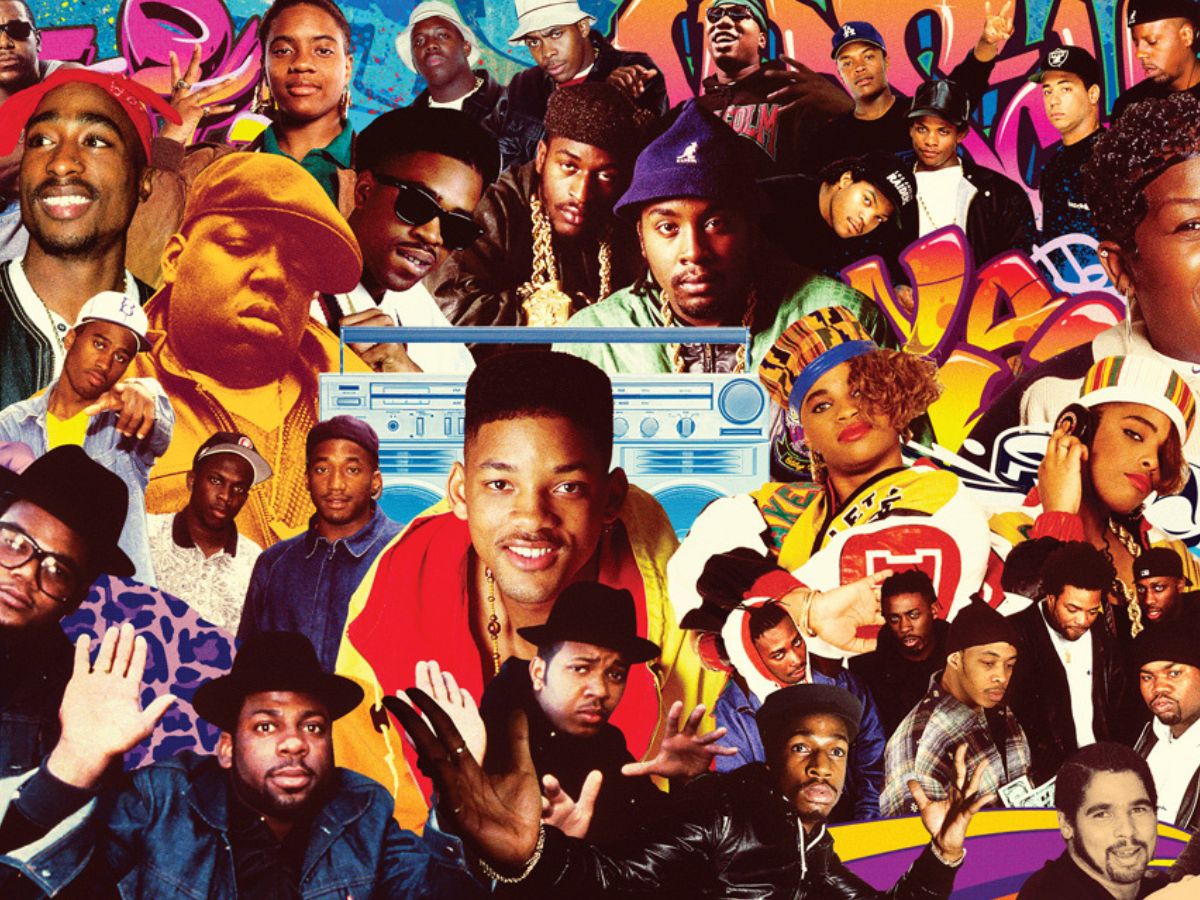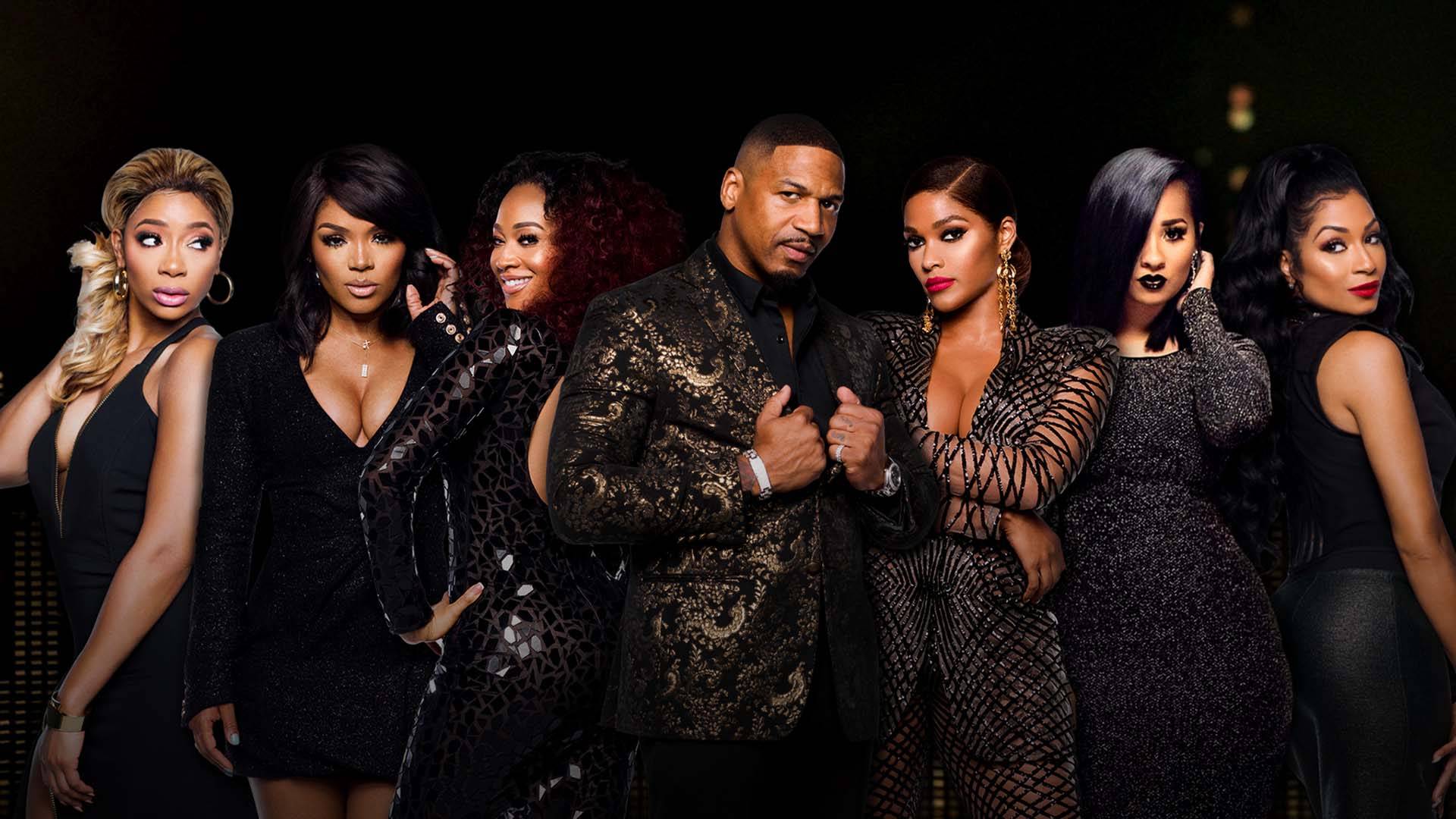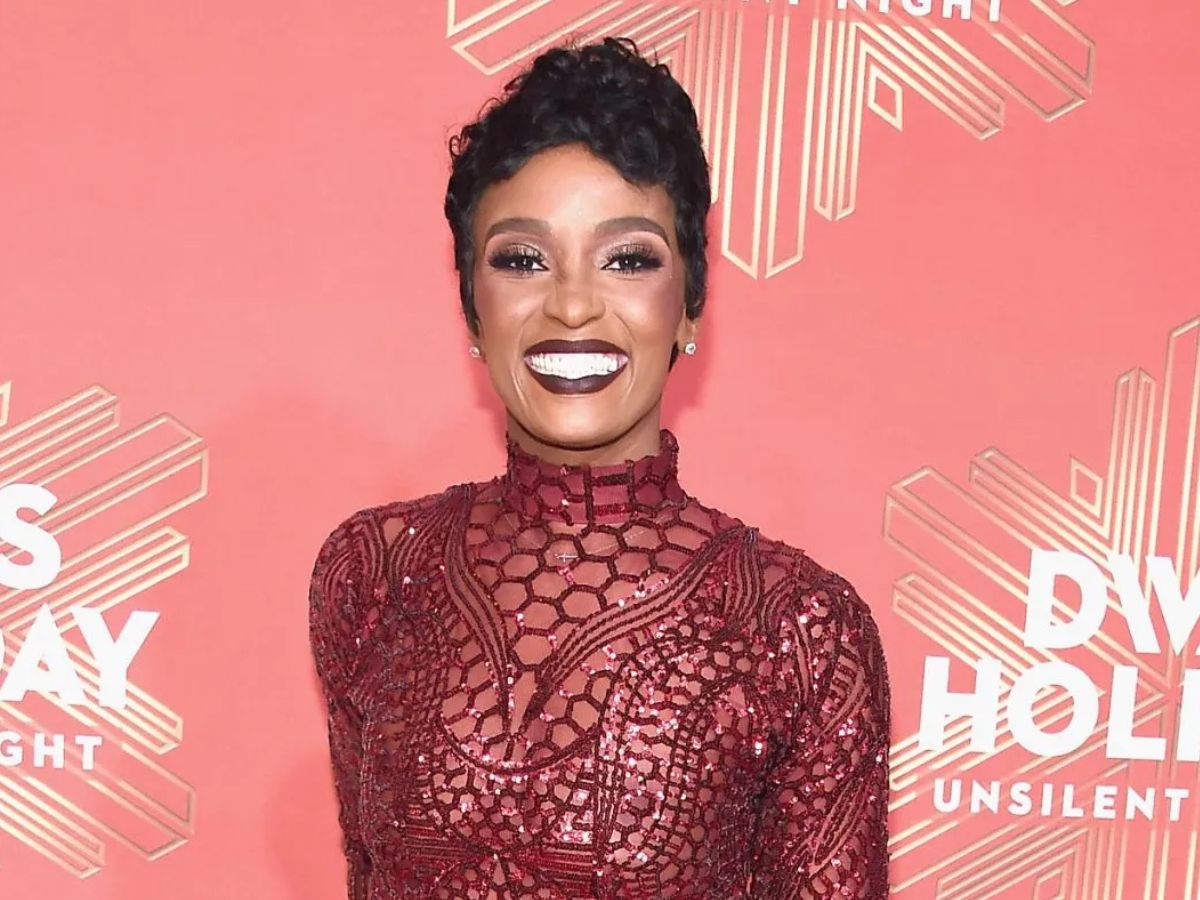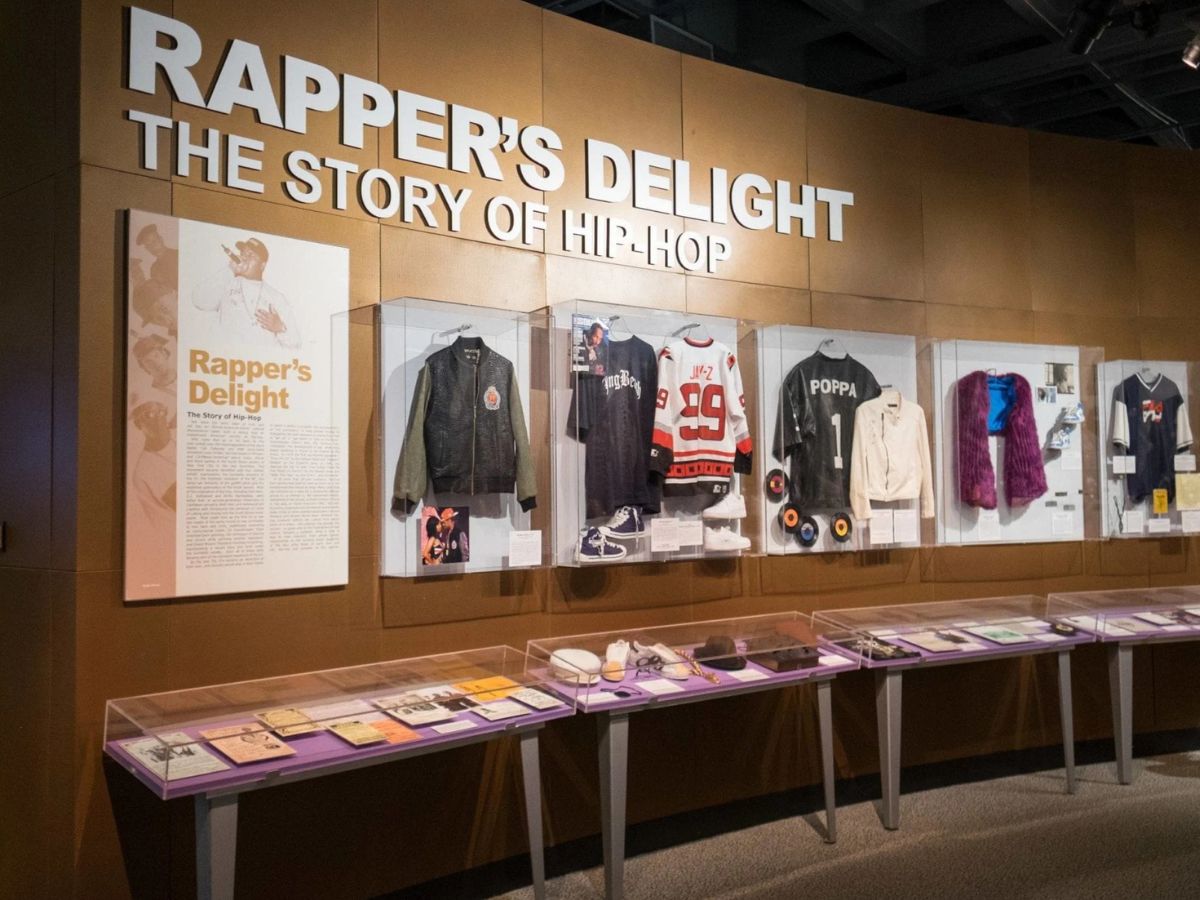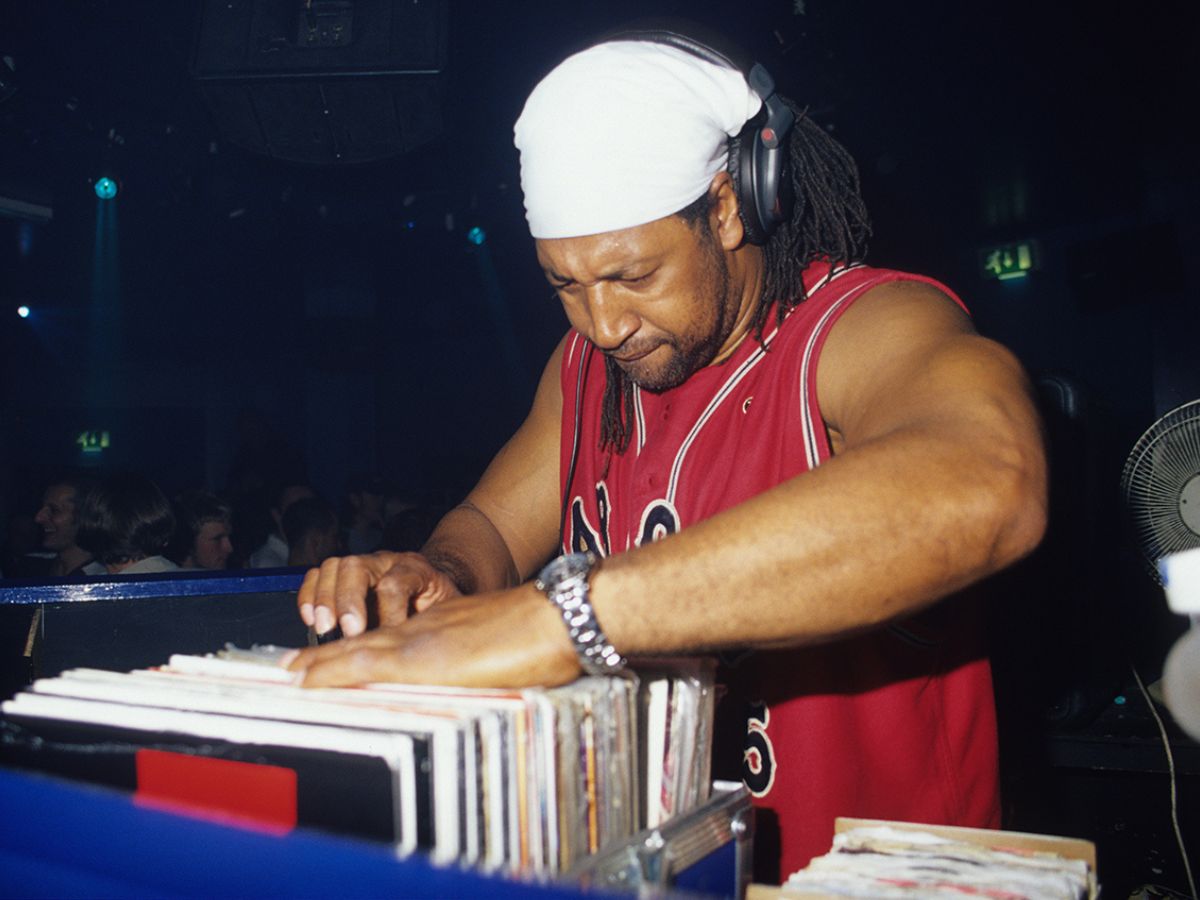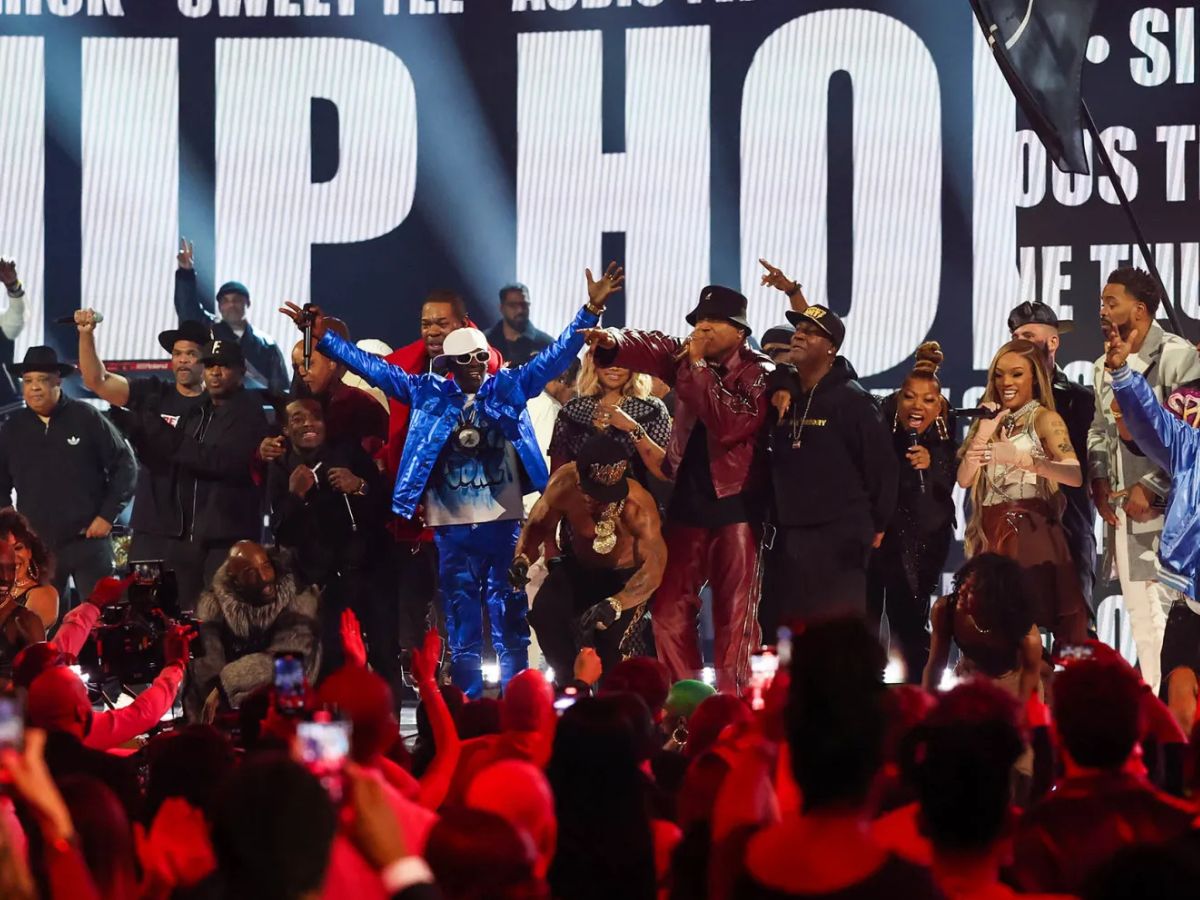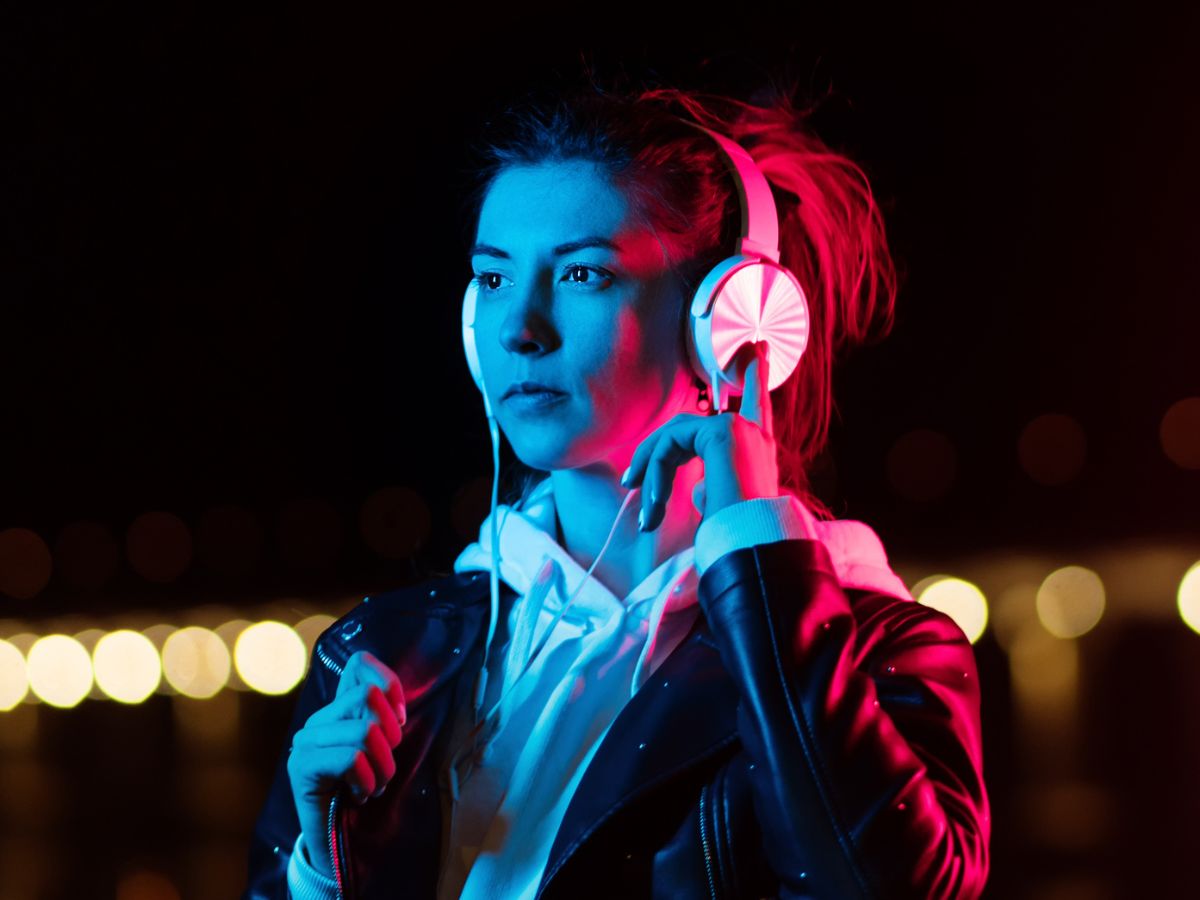

Hip Hop
Who Created Lofi Hip Hop
Published: October 31, 2023
Discover the creative minds behind the soothing beats of lofi hip hop. Dive into the origins and pioneers of this genre that blends elements of hip hop, jazz, and chill vibes.
(Many of the links in this article redirect to a specific reviewed product. Your purchase of these products through affiliate links helps to generate commission for AudioLover.com, at no extra cost. Learn more)
Table of Contents
Introduction
Lofi hip hop has become a cultural phenomenon in recent years, captivating listeners with its soothing and nostalgic soundscapes. This genre, also known as “chillhop” or “lofi beats,” combines elements of hip hop, jazz, and electronic music to create a laid-back and introspective atmosphere. Lofi hip hop has permeated popular culture, serving as the perfect soundtrack for studying, relaxing, and unwinding.
But who exactly created this unique genre? The origins of lofi hip hop can be traced back to the early 2000s, when producers and artists began incorporating lo-fi aesthetics into their music. These pioneers laid the foundation for what would later become a thriving and diverse scene, attracting millions of listeners from around the world.
In this article, we will delve into the origins of lofi hip hop, explore the early pioneers of the genre, and discuss its development and rise in popularity. We will also dive into how internet culture has played a significant role in shaping the lofi hip hop scene and examine the diverse range of creators contributing to this continuously evolving genre.
So sit back, relax, and join us on a journey through the captivating world of lofi hip hop.
Origins of Lofi Hip Hop
The roots of lofi hip hop can be traced back to the early 2000s when producers started experimenting with incorporating lo-fi aesthetics into their music. Lo-fi, short for “low fidelity,” refers to a deliberate use of lower quality audio production techniques to create a nostalgic and vintage sound.
One of the key influences on the beginnings of lofi hip hop was the underground hip hop and instrumental hip hop movements of the 1990s. Artists like J Dilla, Madlib, and Nujabes were known for their use of dusty samples, vinyl crackle, and raw drum breaks. These elements gave their music a raw and unpolished charm that resonated with listeners seeking a more organic and authentic sound.
Another important influence on the origins of lofi hip hop was the rise of internet communities and platforms dedicated to sharing and discovering music. Websites like SoundCloud and Bandcamp provided an accessible platform for aspiring artists to showcase their work. This democratization of music production and distribution allowed for a proliferation of lofi hip hop tracks, connecting artists and listeners from all corners of the world.
The emergence of lofi hip hop as a distinct genre can also be attributed to the rise of digital audio workstations (DAWs) and music production software. These tools made it easier for producers to create and manipulate sounds, layer samples, and experiment with different effects. The accessibility of these technologies contributed to the growth of the lofi hip hop scene, as more artists were able to explore and create within the genre.
As lofi hip hop gained traction, artists began to experiment with blending other genres into the mix. Jazz, in particular, became a prevalent influence on lofi hip hop, with its smooth melodies and laid-back rhythms. The incorporation of jazz elements, such as sampled saxophone lines or piano chords, added a new dimension to the genre, further enhancing its relaxing and nostalgic vibes.
In the next section, we will explore some of the early pioneers who played a crucial role in shaping and popularizing lofi hip hop.
Early Pioneers in Lofi Hip Hop
While lofi hip hop as a genre has gained immense popularity in recent years, it was the early pioneers who paved the way for its growth and recognition. These visionary artists embraced the lo-fi aesthetics and brought a fresh perspective to the world of hip hop music.
One of the most influential figures in the early days of lofi hip hop is J Dilla. Known for his innovative production techniques, J Dilla seamlessly blended lo-fi elements with soulful samples, creating a distinct and timeless sound. His albums, such as “Donuts” and “The Shining,” became cult classics within the hip hop community, inspiring countless producers and artists to explore the world of lofi hip hop.
Another key figure in the development of lofi hip hop is Nujabes. Hailing from Japan, Nujabes crafted delicate and atmospheric beats that beautifully intertwined elements of jazz, hip hop, and electronica. His album “Modal Soul” in particular became a seminal work in the genre, combining soothing melodies with lo-fi production techniques.
Madlib, often regarded as one of the most versatile and innovative producers in hip hop, also played a significant role in shaping the early trajectory of lofi hip hop. His eclectic and sample-heavy approach to production, as showcased in albums like “Shades of Blue” and “Madvillainy,” provided a blueprint for lofi hip hop’s experimental and multi-layered sound.
As lofi hip hop continued to evolve, new artists emerged, adding their own unique flavor to the genre. Producers like Knxwledge, known for his soulful and off-kilter beats, and Flying Lotus, who combined electronic elements with lo-fi aesthetics, expanded the boundaries of what could be achieved within the genre.
It is important to note that while these artists were instrumental in shaping lofi hip hop, the genre did not rely solely on individual pioneers. The collaborative and communal nature of the genre meant that countless producers, DJs, and beatmakers contributed their own styles and influences. This collaborative spirit is one of the defining characteristics of lofi hip hop, as artists from all walks of life come together to create a diverse and vibrant scene.
In the next section, we will explore the development and growth of the lofi hip hop scene, as well as the influences that have shaped its evolution.
Development of the Lofi Hip Hop Scene
The development of the lofi hip hop scene can be attributed to a combination of factors, including the rise of internet communities, the accessibility of music production tools, and the increasing demand for relaxing and introspective music. As more artists embraced the lo-fi aesthetics and began experimenting with the genre, a distinct and thriving scene began to emerge.
One of the key drivers of the growth of the lofi hip hop scene was the internet. With the advent of platforms like SoundCloud, Bandcamp, and YouTube, artists had a direct avenue to share their music with a global audience. This led to a democratization of music production, where aspiring producers could showcase their talent without the traditional barriers of record labels or physical distribution. This newfound accessibility allowed for a diverse range of artists to contribute to the evolving sound of lofi hip hop.
Simultaneously, listeners began to seek out more relaxing and ambient music to enhance their study sessions, work environments, or moments of introspection. Lofi hip hop provided the perfect soundtrack for these activities, with its atmospheric and contemplative nature. This growing demand for chill and mellow music fueled the popularity of lofi hip hop, leading to its presence on streaming platforms and playlists dedicated to relaxation and focus.
The development of the lofi hip hop scene was also shaped by the shared influences and collaborations among artists. Producers would often connect and collaborate with one another, exchanging samples, techniques, and ideas. This sense of community fostered a supportive and collaborative environment, where artists could learn from one another and push the boundaries of the genre.
It is also important to acknowledge the role of visual aesthetics in the development of the scene. Lofi hip hop is often accompanied by looping visuals of scenes from vintage anime, rainy cityscapes, or cozy interiors. These visuals, often referred to as “study beats” or “chill beats,” became a staple of the lofi hip hop culture. The combination of the relaxing music and nostalgic visuals served as a form of escapism and created a distinct visual identity for the genre.
As the lofi hip hop scene continued to flourish, dedicated record labels and collectives emerged, further solidifying the genre’s presence. Labels such as Chillhop Records and Inner Ocean Records became instrumental in curating and promoting lofi hip hop releases, providing a platform for both established and emerging artists.
In the next section, we will explore some of the influences that have shaped the sound and evolution of lofi hip hop.
Influences on Lofi Hip Hop
Lofi hip hop is a genre deeply influenced by a wide range of musical genres and cultural movements. These influences have shaped the sound and aesthetic of lofi hip hop, giving it its distinct charm and nostalgic appeal.
Jazz is one of the primary influences on lofi hip hop. The smooth melodies, soulful instrumentation, and improvisational nature of jazz have seamlessly been incorporated into the genre. Lofi hip hop often samples jazz records, utilizing the warm and soothing sounds of instruments like the saxophone, piano, and trumpet to create atmospheric and relaxing tracks.
The boom-bap style of hip hop, rooted in the golden era of the genre in the 1990s, has also left its imprint on lofi hip hop. The use of dusty vinyl samples, raw drum breaks, and repetitive loops reminiscent of classic hip hop beats have become a signature of the genre. This connection to hip hop’s roots adds a nostalgic and familiar quality to lofi hip hop tracks.
The influence of electronic music, particularly in the realm of downtempo and trip-hop, is prevalent in the sound of lofi hip hop. Artists like DJ Shadow and Boards of Canada, known for their atmospheric and textured productions, have inspired many lofi hip hop producers. The use of electronic elements adds depth and experimentation to the genre, complementing the organic sounds of jazz and hip hop.
Another important influence on lofi hip hop is the soundscape of urban environments. The bustling city streets, the sound of raindrops, and the gentle hum of everyday life are often incorporated into lofi hip hop tracks, providing a sense of nostalgia and escapism. These environmental sounds help create immersive and contemplative atmospheres, contributing to the genre’s soothing and introspective nature.
Beyond the realm of music, films and anime have also influenced the visual aesthetics of lofi hip hop. Vintage anime footage, old movie clips, and retro visual effects are often paired with lofi hip hop tracks in videos and live streams. These visuals evoke a sense of nostalgia and create a shared visual language that complements the genre’s sonic landscape.
Thus, the influences on lofi hip hop are vast and diverse, drawing from jazz, hip hop, electronic music, urban environments, and visual mediums. These influences have shaped the genre into a unique blend of sounds and aesthetics, captivating listeners with its soothing and nostalgic atmosphere.
In the next section, we will discuss the rise in popularity of lofi hip hop and its connection to internet culture.
Rise in Popularity of Lofi Hip Hop
In recent years, lofi hip hop has experienced a meteoric rise in popularity, captivating millions of listeners worldwide. This surge in popularity can be attributed to various factors, including the genre’s unique sound, its accessibility through online platforms, and its connection to internet culture.
One of the key reasons for the widespread appeal of lofi hip hop is its soothing and relaxing nature. The genre’s laid-back beats, chilled melodies, and nostalgic aesthetics create a sonic atmosphere that is perfect for unwinding, studying, or simply seeking moments of calm. Lofi hip hop offers a distinct escape from the hustle and bustle of daily life, providing a sense of tranquility and introspection that resonates with listeners.
Furthermore, the accessibility of lofi hip hop on online platforms has played a crucial role in its popularity. Websites like YouTube, SoundCloud, and Spotify have made it effortless for listeners to discover and engage with a wide range of lofi hip hop tracks and playlists. The genre’s presence on popular streaming platforms has enabled easy access for listeners, allowing them to explore and enjoy the music at their convenience.
In addition to its sonic appeal, lofi hip hop has also become intertwined with internet culture. The genre’s association with “study beats” and “chill vibes” has made it a staple in live stream channels and video loops. Many listeners tune in to lofi hip hop streams while studying, working, or relaxing, which has led to a sense of community and shared experience among listeners. This internet-driven culture has fostered a thriving community around lofi hip hop, where listeners can connect, interact, and discover new music together.
Moreover, the visual aspect of lofi hip hop, with its looped footage of retro anime or cozy interiors, has garnered significant attention. These visuals, often found in YouTube live streams or as cover art for tracks, add an additional layer of immersion and enhance the listening experience. The combination of the music and visuals creates a multisensory experience that engages and captivates viewers.
Additionally, lofi hip hop’s use in various media forms, including advertisements, films, and vlogs, has contributed to its mainstream recognition. Its versatile and adaptable nature allows it to seamlessly fit into different contexts, further expanding its reach and exposure to wider audiences.
Overall, the rise in popularity of lofi hip hop can be attributed to its unique sound, accessibility through online platforms, connection to internet culture, and its versatility in various media forms. As the genre continues to grow and evolve, it is likely to attract an even larger audience, becoming a lasting part of the music landscape.
In the next section, we will explore the influence of internet culture on the development and popularity of lofi hip hop.
Internet Culture and Lofi Hip Hop
Lofi hip hop and internet culture go hand in hand, with the genre thriving and spreading its influence through various online platforms. The rise of lofi hip hop can largely be attributed to the internet, which has provided a fertile ground for its creation, distribution, and community-building.
One of the key factors that contributed to the growth of lofi hip hop is the accessibility and ease of sharing music on the internet. Platforms like SoundCloud, Bandcamp, and YouTube have allowed artists to upload their tracks and share them with a global audience without the need for traditional gatekeepers like record labels. This democratization of music production and distribution has empowered aspiring artists to showcase their talents and connect with fans from all around the world.
The communal nature of internet culture has also played a significant role in the development of the lofi hip hop scene. Online communities and forums dedicated to the genre have emerged, providing spaces for artists and listeners to interact, share their work, and collaborate. These digital communities have fostered a spirit of creativity, inspiration, and mutual support among lofi hip hop enthusiasts.
Streaming platforms, particularly YouTube, have been instrumental in elevating the visibility of lofi hip hop. The genre’s affinity for looped visuals and calming aesthetics has made it the perfect fit for live streaming channels and study-focused videos. Lofi hip hop live streams, often featuring looping footage of vintage anime or cozy environments, have gained massive popularity, attracting millions of viewers who tune in for hours of relaxation and productivity.
Internet memes and viral content have also played a role in boosting the profile of lofi hip hop. Lofi hip hop tracks have been used as background music in countless viral videos, memes, and TikTok challenges, exposing the genre to broader audiences and enhancing its cultural impact. This form of organic promotion and viral sharing has contributed to the genre’s rapid rise in popularity.
The internet has also facilitated the creation of alternative revenue streams for lofi hip hop artists. Platforms like Patreon and Bandcamp allow fans to directly support their favorite artists through subscriptions or purchases, providing a sustainable income source outside of traditional music industry structures. This direct connection between artists and fans strengthens the bond within the community and encourages creative exploration.
As lofi hip hop continues to evolve and adapt, internet culture will undoubtedly play a crucial role in shaping its future trajectory. The genre’s deep integration with online platforms, digital communities, and visual aesthetics makes it uniquely suited for the internet age.
In the final section, we will explore the diversity of creators within the lofi hip hop scene and the genre’s potential for continued growth and innovation.
Diversity in Lofi Hip Hop Creators
One of the most remarkable aspects of the lofi hip hop scene is the diversity of its creators. Artists from all backgrounds and corners of the globe have contributed to the genre, bringing their unique perspectives and influences into the music. This diversity has not only enriched the sound and aesthetics of lofi hip hop but also fostered a sense of inclusivity and representation within the community.
In terms of geographical diversity, lofi hip hop has transcended borders and connected artists from various countries and cultures. Producers from Japan, the United States, the United Kingdom, Australia, and many more have made significant contributions to the genre. This global collaboration has resulted in a rich and diverse tapestry of sounds, incorporating different musical traditions, languages, and artistic visions.
The lofi hip hop scene has also welcomed artists from various musical backgrounds, further expanding its sonic palette. Musicians who specialize in jazz, hip hop, electronic music, soul, and even classical genres have found their home within the lofi hip hop community. This blend of influences has led to the fusion of different elements, creating a captivating and innovative sound that continues to evolve.
Furthermore, the growing visibility of female and non-binary artists within the lofi hip hop scene is a positive development for the genre. Their presence and contributions challenge the traditionally male-dominated music industry and pave the way for more diverse representation. More and more women and non-binary producers are making their mark in lofi hip hop, showcasing their talents and bringing unique perspectives to the genre.
Beyond geographical and gender diversity, the lofi hip hop community embraces a wide range of artistic and creative expressions. Visual artists, animators, graphic designers, and video editors contribute their talents to create captivating visuals that accompany lofi hip hop tracks. This collaboration of visual and musical artists results in a multi-sensory experience that elevates the genre’s appeal.
Moreover, within the lofi hip hop community, collaborations and featured artists are commonplace. Producers often work together or incorporate guest musicians and vocalists into their tracks, further diversifying the sound and introducing new voices to the genre. This collaborative spirit encourages experimentation and pushes the boundaries of traditional lofi hip hop sounds.
Overall, the diversity within the lofi hip hop scene not only reflects the global reach of the genre but also showcases the power of music to bring people together. The inclusive and collaborative nature of the community fosters an environment where artists from all backgrounds and identities can contribute their unique perspectives, pushing the genre forward and keeping it fresh and exciting.
In the final section, we will conclude our discussion and reflect on the significance of lofi hip hop in contemporary music culture.
Conclusion
Lofi hip hop has emerged as a significant and influential genre in contemporary music culture. Its soothing soundscapes, nostalgic aesthetics, and connection to internet culture have captivated millions of listeners across the globe. The genre’s origins can be traced back to the early pioneers who embraced lo-fi aesthetics and explored the blending of hip hop, jazz, and electronic elements.
As the lofi hip hop scene developed, the internet played a crucial role in its growth and popularity. Online platforms provided a space for artists to share their music, connect with a global audience, and foster a sense of community among listeners and creators. The accessibility of lofi hip hop on streaming platforms and its association with study sessions and relaxation further fueled its rise in popularity.
Lofi hip hop’s appeal also lies in its ability to incorporate a variety of influences, including jazz, hip hop, electronic music, and urban environments. These influences have contributed to the genre’s unique and atmospheric sound, as well as its visual aesthetics that often complement the music in looping videos and live streams.
Moreover, the diversity within the lofi hip hop scene has been an essential aspect of its growth. Artists from different countries, musical backgrounds, and identities have contributed to the genre, enriching the sound and fostering inclusivity within the community. The collaboration and representation of artists from all walks of life ensure that lofi hip hop continues to evolve and innovate.
In conclusion, lofi hip hop’s rise in popularity and cultural significance can be attributed to its soothing and introspective sound, its association with internet culture, and the diversity of its creators. As the genre continues to evolve and gain recognition, it remains an integral part of contemporary music culture, providing a tranquil and immersive experience for listeners around the world.

